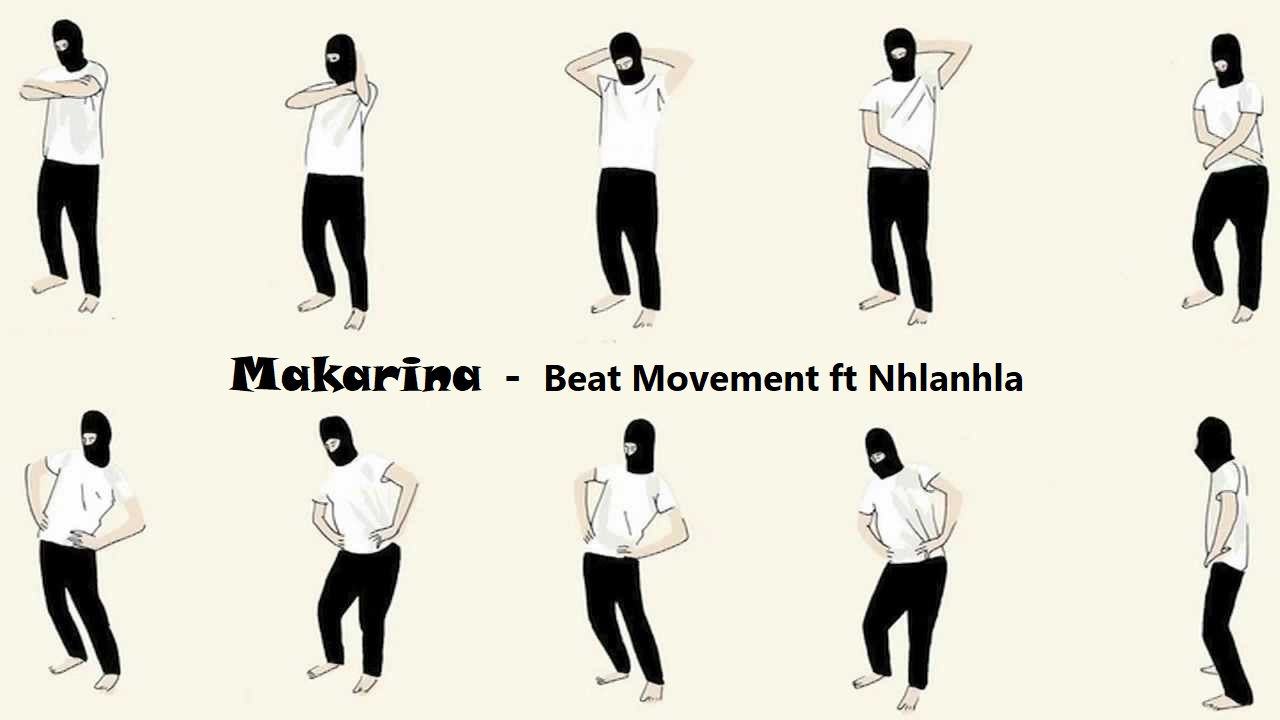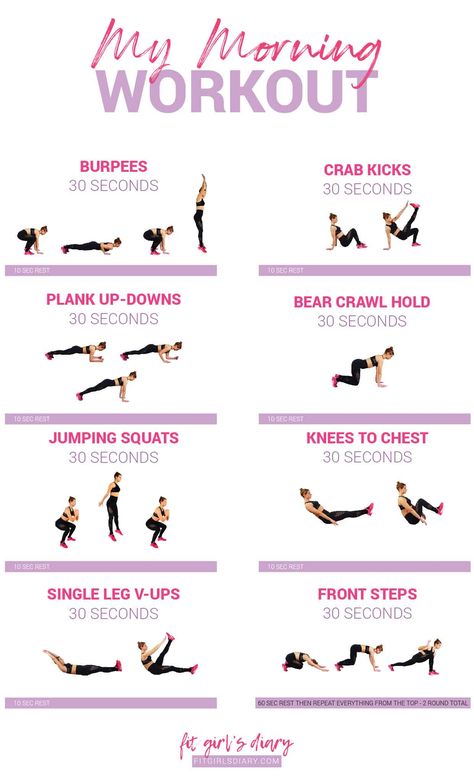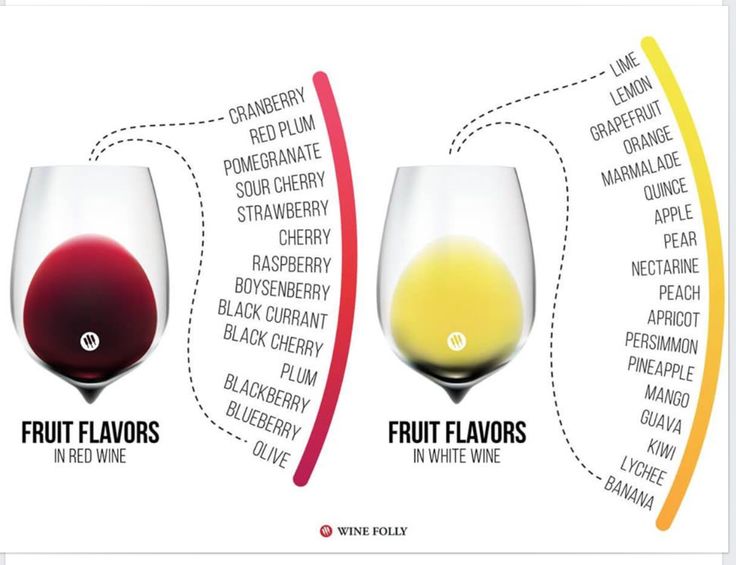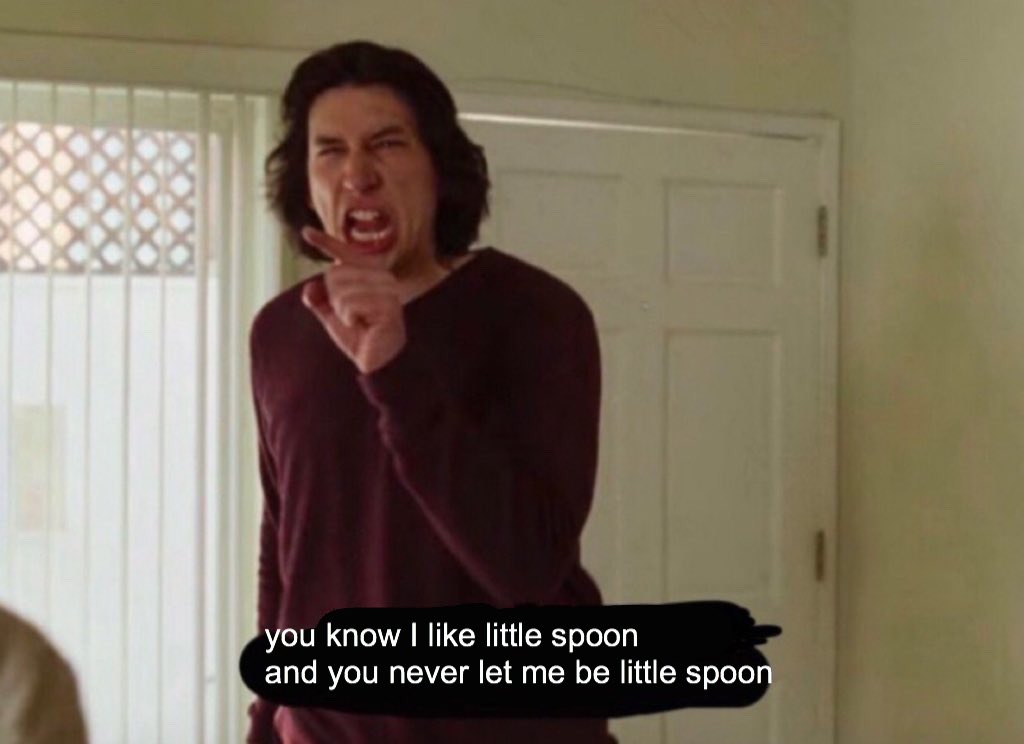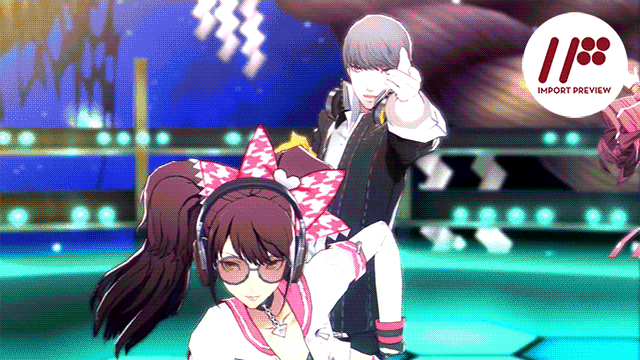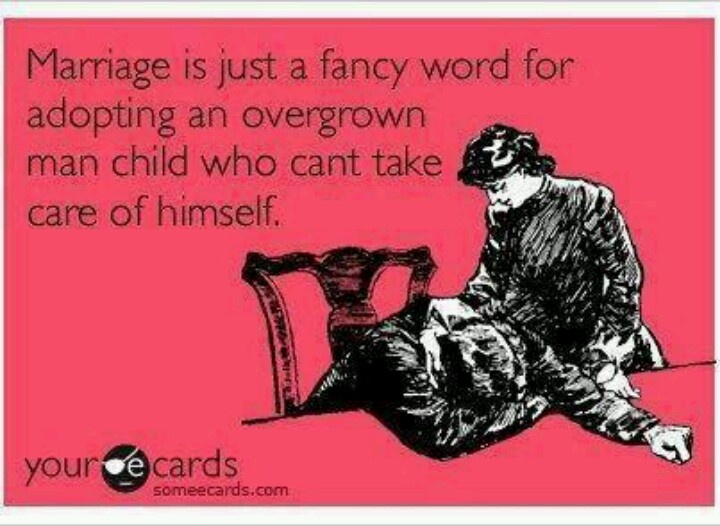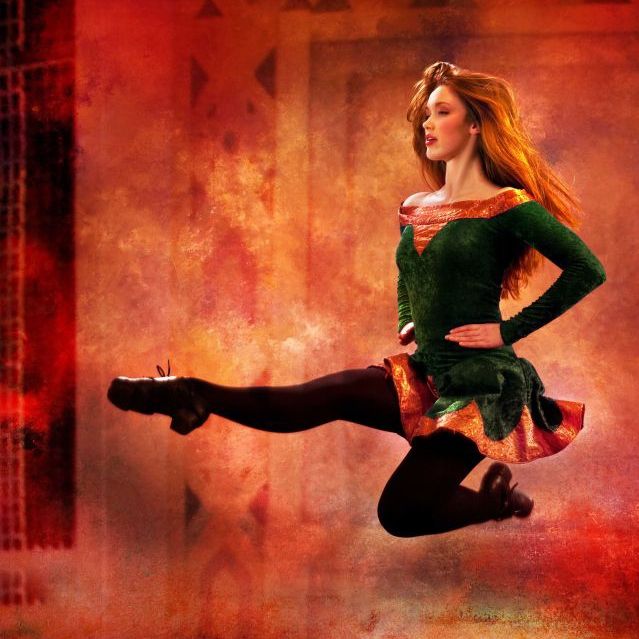How to make your dance moves sharp
How To Be A Cleaner Dancer
Are you trying to be a cleaner dancer? We can help! While dance is a form of expression and not a military drill, being clean allows others to see and understand your movements better. And having a good understanding of your execution will help you feel free-er and more expressive! Here are some tips that will help you be a cleaner dancer.
1. Developing body awareness
To be a clean dancer, you must develop a sense of awareness so that you are able to mimic the pictures of the choreographers or those around you. At any given time, you should know where each body part is placed, down to your fingertips. It’s always a good idea to take a step back and notice what your body is doing in relation to what you want it to do. Are your toes pointing in or out? Fingers together or spread apart? Shoulders tensed or relaxed? Take a look in the mirror and try to match the choreographer or fine-tune what picture you want to make.
Practice with: The Ultimate Guide To Body Awareness For Beginner Dancers
2. Knowing your basic anglesThere are certain body angles and positions that'll help you to memorize know because they are used often. As you take more classes (especially foundational styles and beginner classes), hitting these angles will become second nature. If you’re newer to dancing, then drill the basic angles into your body so that it won't be something you consciously have to pay attention to all the time. Here are more reasons Why Every Dancer Should Take A Beginner Dance Class
For example, 45 and 90 degree angles are always used, so get that into your system ASAP. This will let you to focus on other details that make up the move. And come cleaning time, you won't have to be cleaned as often because you already have a handle on the base of the moves.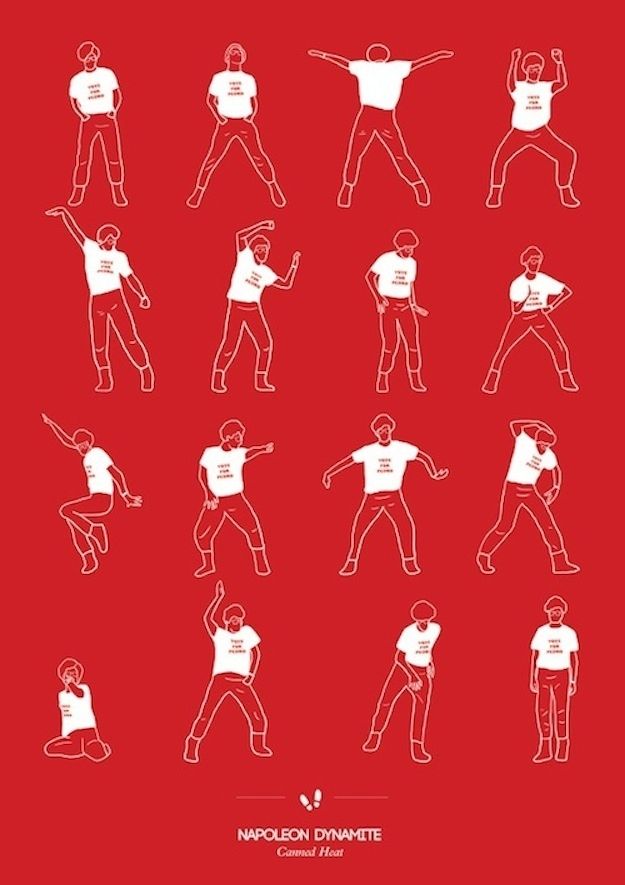
Trying to clean a large group? Directors, this is How To Clean Your Dance Team
3. Using your musclesIf your arms or any other body parts are floppy, then you’re going to look messy. So use your muscles! You should think of them as brakes for your movement that’ll let you freeze at a moment’s notice. Tense up at the RIGHT moments to stick your pictures. I’ve done exercises where I go through any pictures in a piece and flex my body at those points to try to develop muscle memory for each picture. The more developed your muscles are, the better you will be at controlling your movement.
Not sure how to practice? Use these tips: Wanna Dance With More CONTROL?
4. Defining your path of movementTo be a cleaner dancer, it’s critical that you think about the pathway of the movements. When you look for directions on Google Maps, it’ll show you different ways from getting from point A to point B.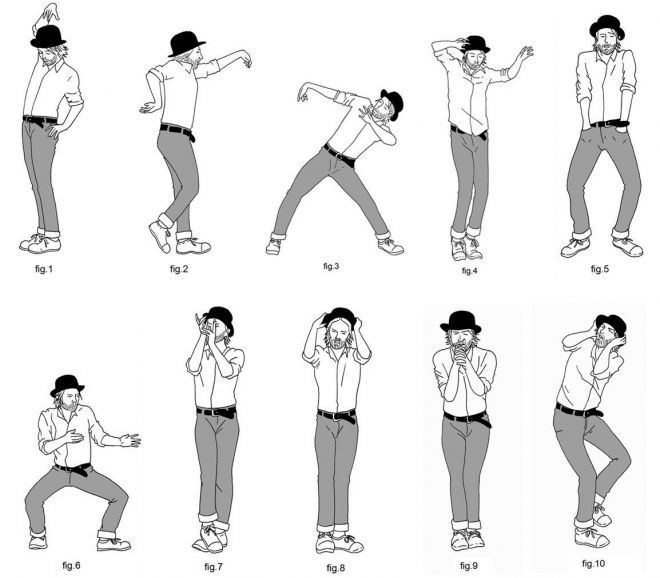 Yes, you’ll get to where you want to go in the end, but all these pathways look SUPER different.So when you’re learning choreography and don't feel like you're doing it right, take a look at the path of your moves.
Yes, you’ll get to where you want to go in the end, but all these pathways look SUPER different.So when you’re learning choreography and don't feel like you're doing it right, take a look at the path of your moves.
Mastering timing will help your cleanliness like crazy. Being able to move slow and take your time AND being able to move crazy fast can only translate well if you're doing it cleanly. And if you can’t do the moves properly at 1/10th of the speed, then there’s no way you can do it right in tempo. So start slow, first. I like to take a piece and go through it a couple times really slowly, so I can really get the pictures right and understand how it feels in my body. Then I speed it up in increments until I can do it in tempo. This is especially helpful before you cast or do groups in class.If you want to take it a step further, then learn some popping animation fundamentals!
Poppers have some of the craziest speed control.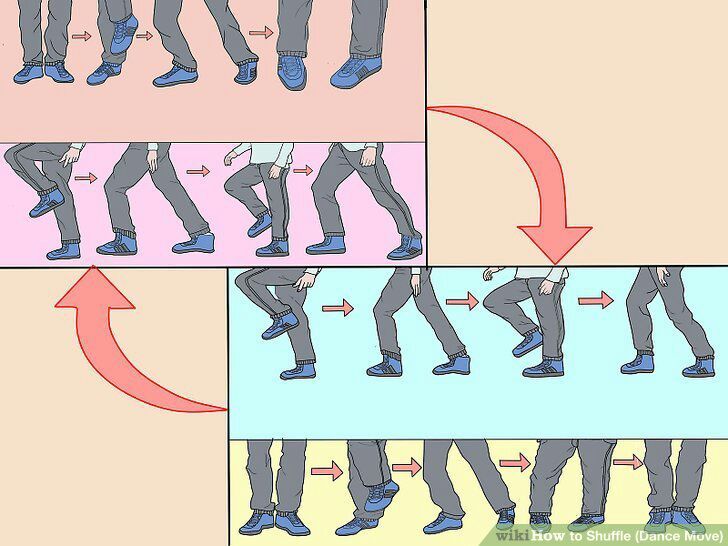 Learn to dance on top of the music: How To Train Your Musicality As A Dancer
Learn to dance on top of the music: How To Train Your Musicality As A Dancer
When you’re doing choreography or other hip hop styles, you want to be really grounded in your movements so that you’re not toppling over while you’re dancing. You can’t have a strong tree without strong roots – and your feet and legs are the ones anchoring you to the floor as you’re dancing.If you’re going to be wobbling while you’re trying to move around, then it’s likely that you won’t be able to do any of the other moves 100% correctly.
"Don’t skip leg day," they say – and the same goes for dancing. Stay grounded and balanced to better execute your moves! Read about Why "Staying Light On Your Feet" Is Actually Bad Advice Taking classes on STEEZY Studio is the perfect way to polish your cleanliness. Choreographers not only teach each move in thorough detail, you get to practice each combo or section as many times as you need.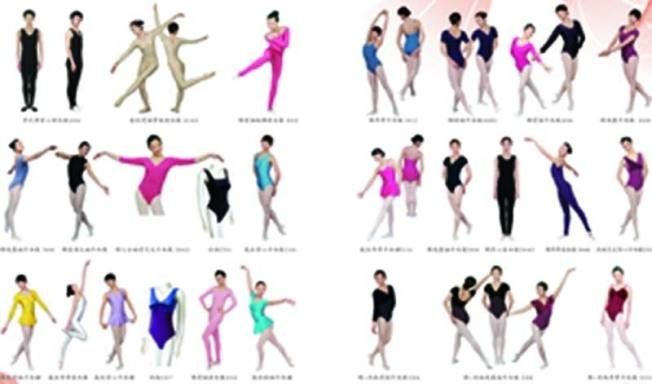 Watch this video for more tips on dancing clean!
Watch this video for more tips on dancing clean!
Sign up today to start for free! Do you have any activities your practice to help with cleanliness? Share them with the community by commenting below!
How to make your dance moves look cleaner | by Jason Pu
Ever wonder how your favorite dancer moves so cleanly?
Whether you’re doing ballroom or breaking, cleanliness is king. Precise execution is a hallmark of contemporary hip hop in particular — think Lyle Beniga or Les Twins. These dancers have spent countless hours refining their motor skills to achieve razor-sharp movement.
Luckily, you don’t have to be a pro to level up these skills.
Making your moves cleaner is all about muscle memory. It’s defined as “the ability to repeat a specific muscular movement with improved efficiency and accuracy that is acquired through practice and repetition” (Merriam Webster). When you properly set a dance move into your muscle memory, it comes out right without thinking twice.
When you properly set a dance move into your muscle memory, it comes out right without thinking twice.
Despite the name, muscle memory happens in the brain. There are two steps to the process: a memory encoding stage, and a memory consolidation stage. In other words, you learn by doing, then let your brain do its thing. Completing this process again and again will have your repertoire looking squeaky clean.
Step 1: Memory encoding
When cleaning a dance move, your job is to teach your brain the information that will eventually turn into instinct. The key word here is “conscious.” Be aware of your body: what it’s doing, how it feels, and the resulting visual.
Below is a general breakdown of “teaching your brain”, assuming you can already perform the technique you want to polish.
- Be aware of what your body is doing. That means each and every body part, from your face to your pinky toe. How engaged is your core? Which body parts are supporting more weight? Don’t worry about how it looks at this stage.
 Focus on what your body parts are doing separately and as a whole to perform the motion.
Focus on what your body parts are doing separately and as a whole to perform the motion. - Be aware of how your body feels. Again, this means the individual parts as well as the whole. Remember the stretch you feel in your left calf, the lightness of your ribcage. If anatomy isn’t your thing, think of an image like “rubber band,” “feather,” or anything that helps you retain the feeling.
- Be aware of the resulting visual. You can use mirrors, video recording, or a companion to help you adjust your actions until the outcome is to your liking. If you’re learning a technique from someone else, use them (or a video) as a reference.
Chances are, you won’t be completely happy after the first run-through. No worries — start again and adjust accordingly. It’s good to go slowly and thoroughly, so that your brain consciously absorbs all the information that you’re encoding to memory.
Source: Wikipedia, “Memory consolidation.”Step 2: Memory consolidation
The second part of muscle memory happens when you’re not training.-Step-18.jpg/aid1640374-v4-728px-Shuffle-(Dance-Move)-Step-18.jpg) In the downtime, your brain redistributes information and forms new pathways between its regions. So get enough sleep, eat healthy, and do what you can to make your brain’s job easier.
In the downtime, your brain redistributes information and forms new pathways between its regions. So get enough sleep, eat healthy, and do what you can to make your brain’s job easier.
Before you know it, your moves will be as clean as a whistle, and they'll be more effortless too. If it’s not working, or you want to make adjustments, simply return to the conscious encoding stage.
Let me know if this helps you practice more effectively or if there’s something I missed. Also, if you’re interested in learning more about muscle memory and the science behind it, this TED-Ed video is a good place to start.
As always, feel free to reach out if you have any questions or feedback; I’m on Instagram @glissando. If you liked the article, I’d be grateful if you shared it or clicked that clap button. Thanks for reading — peace!
90,000 12 life hacks, to quickly learn how to dance from Mamita DanceDances
Author: Pavel Gather
Psychologist, Lecturer Salsa and Tango
Dances
Author: Pavel Pavel
Psychologist, Lecturer Salsa
on At the start, you always want to get a quick result. When it doesn't happen, the hypothesis arises that everything takes time. After a conditionally acceptable time, humility comes to mastering pair dances, which, perhaps, is not given, and I will just do what I learned somehow.
When it doesn't happen, the hypothesis arises that everything takes time. After a conditionally acceptable time, humility comes to mastering pair dances, which, perhaps, is not given, and I will just do what I learned somehow.
This is the most common story of those who believe that the mere act of attending a pair dance class is enough to learn how to dance.
Absolutely not. If you want to really dance well, you have to make an effort outside of the dance class. A good teacher will definitely be needed, but the initiative should be on your side.
1. Listen to music
The most common and accessible advice that is given already in the first lessons. And it definitely works. Music creates a certain atmosphere of the dance and intuitively you want to move to it. It doesn't matter where you listen to music - in the car, on headphones while walking or doing household chores.
An addition that will help you dance better is your active participation in the music.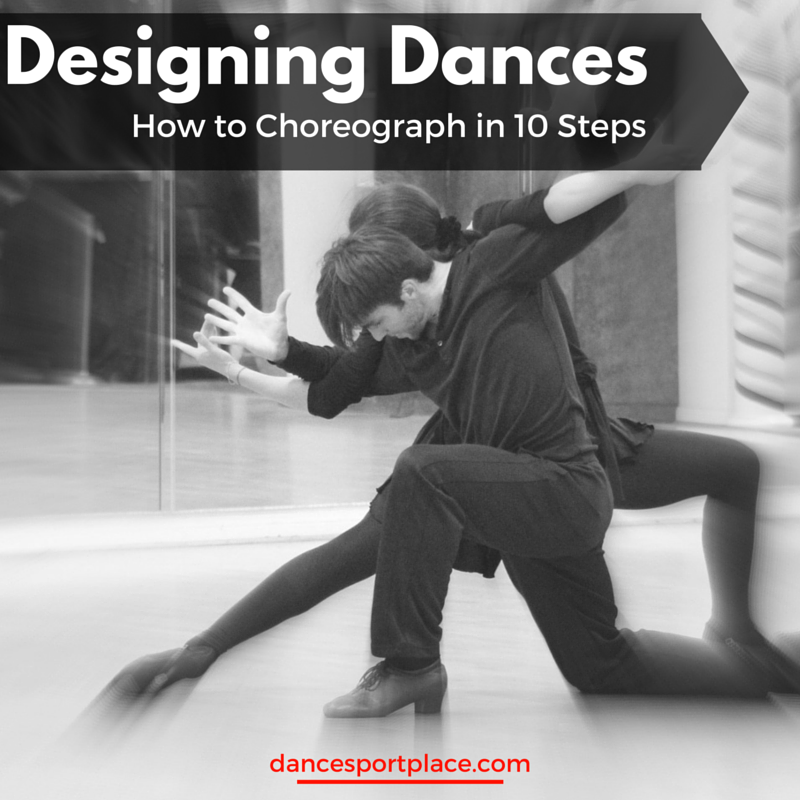 Sing along, dance or simply beat musical accents with any free parts of the body. In the subway, for example, it is enough to tap out bright moments with your fingers, in the car to sing along with sounds, and at home you can jump for pleasure.
Sing along, dance or simply beat musical accents with any free parts of the body. In the subway, for example, it is enough to tap out bright moments with your fingers, in the car to sing along with sounds, and at home you can jump for pleasure.
2. Watch videos of good dancers
It's complicated, but also obvious. It’s more difficult, because without recommendations from more experienced dancers, unfortunately, it’s not so easy to find a good quality video on the net (I mean not the resolution quality, but the content itself).
Meaningful viewing of the video is to form an understanding of HOW the dancers make this or that impression on the partner or the viewer. Technology is at the heart of everything. Understanding how the pros do it is a big step forward.
It is important to distinguish between a show and a disco dance, a choreographed performance from an improvisation, a stylized dance from an authentic one, etc.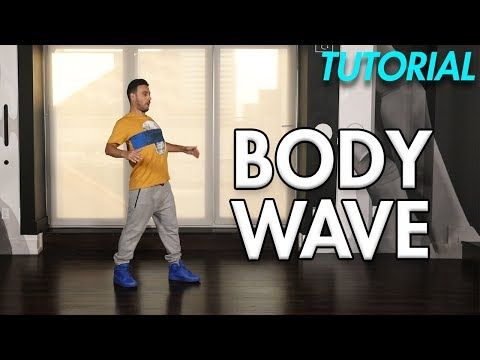 Ask for recommendations and dance instructors will always upload a couple of videos of worthy landmarks.
Ask for recommendations and dance instructors will always upload a couple of videos of worthy landmarks.
Tango Z. Showreel.
Online modern tango courses
Tango nuevo is the most advanced version of tango. We can quickly learn to dance from zero to a steep level.
| View details |
3. Dance in salsatecas/milongas/discotheques
A very delicate moment when it is worth coming to the first party. From a technical point of view, most students in 1-3 months have a sufficient set of figures and techniques to come and dance calmly. Psychologically, the same moment can be stretched out for an indefinite time. After all, it is imperative to “not lose face”, “learn more figures” and be sure what to do in case “there is an unfamiliar movement”.
In fact, the partygoers don't really care (except for a small layer of non-professional teachers who want to help inexperienced dancers by treating them as customers in the future). It is important to come and try dancing after a month of classes. You can only with friends or guys from your group. This will be enough to feel the adrenaline and inspiration from the dance.
It is important to come and try dancing after a month of classes. You can only with friends or guys from your group. This will be enough to feel the adrenaline and inspiration from the dance.
4. Dance with partners or partners not of your level
The conventional wisdom that you need to practice in groups of your level does not withstand the test of experience. Perhaps now your eyes widened in surprise, and you want to meaningfully read the phrase again. Yes, you saw everything correctly: when you dance with a partner of your level, you don’t grow anywhere.
It's important to understand that not only does it work one way and you have to dance with cooler dancers, but it works even more effectively the other way. It is no coincidence that teaching pair dances dramatically raises the level of the teacher himself. You have an endless stream of very beginner dancers.
How it works. A more experienced partner needs to be "stretched".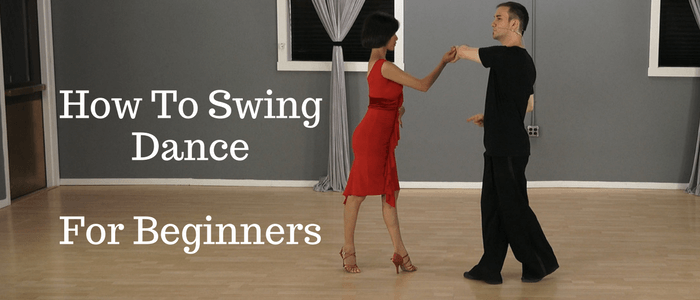 It's easy and obvious. With beginners, you need to take more initiative on yourself, see the general pattern of the dance more widely, turn on and insure more, try to be an example and be more careful. The quality of interaction begins to grow significantly. And wonderful partners too.
It's easy and obvious. With beginners, you need to take more initiative on yourself, see the general pattern of the dance more widely, turn on and insure more, try to be an example and be more careful. The quality of interaction begins to grow significantly. And wonderful partners too.
Dancing with partners of your level doesn't make you grow. Dance with both beginners and more advanced dancers
Dominican Bachata Women's Style Online Course
Want to learn how to hypnotize those around you with the most appetizing part of your body? On the course we will tell you all the secrets.
| Interesting |
5. Learn to dance for a partner and for a partner
Turks and Argentines are one of the best partners in the world. In Russia, partners are highly valued. Why? The answer is simple. In Argentina and Turkey, it is not questionable for men to ask another man to lead in one piece or another and give feedback on the quality of the lead. For them, it will be a great shame to hear moralizing from a partner, or even more so to be known in the community as an insecure partner.
For them, it will be a great shame to hear moralizing from a partner, or even more so to be known in the community as an insecure partner.
In Russia, due to the constant, often far-fetched, opinion that there are more women in pair dances, partners calmly get up and study their partner's part. Such partners then grow into very cool dancers and teachers. In no case do this at parties, only in class. Here we are talking only about the learning strategy. At parties, be yourself.
6. Do not memorize the links
Always try to look deeper and understand the through principle and idea of movement. Understanding what and how is done will make it possible to independently generate any sequences and chips.
Human memory is limited and there will always be a moment when something will escape and your repertoire will be limited by the size of RAM.
In Argentine tango, for example, there are seven levels of movement construction that, when mastered, will allow you to make millions of combinations.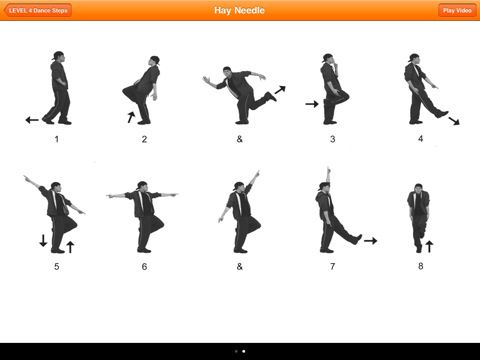 And how many dance sequences can you really remember? In rueda, more than 150 figures dance in a rare circle. It's hard to keep more in mind.
And how many dance sequences can you really remember? In rueda, more than 150 figures dance in a rare circle. It's hard to keep more in mind.
7. Develop your body
Many years of experience in teaching couple dance shows that as soon as everyone pairs up in a class, any progress in individual style ends. But it is the individual style that distinguishes everyone at the disco: partners change, and style is always with you.
The body as the main instrument of dance must be very plastic, responsive and emotional. Surprisingly, not all pair dance schools have a general physical warm-up. It is vital to tune the body and understand how it works.
You can always train extra and concentrate more on the basic steps, as their true value is as body work. The sequence of steps is, in fact, the simplest thing that can be in pair dancing. The quality of individual performance determines the craftsmanship.
8. Try on the images of inspiring dancers
A psychological life hack for those who have already mastered the steps, but still feel that there is not enough brightness and drive.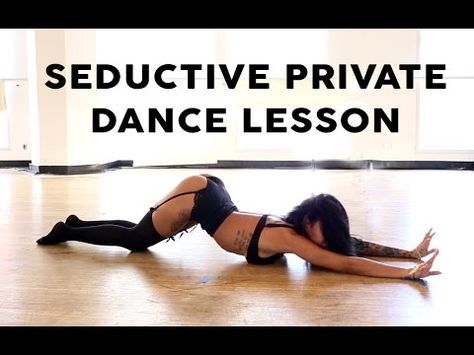 Most are terribly afraid of being someone else's "clone". Here the action is the same as under the influence of hypnosis - the more you resist, the more you plunge into an altered state of consciousness.
Most are terribly afraid of being someone else's "clone". Here the action is the same as under the influence of hypnosis - the more you resist, the more you plunge into an altered state of consciousness.
With a high degree of probability, you are already dancing like someone else's "clone". A meaningful fitting of someone else's image is that you mentally take the image of the one who inspires you (inspiration is critical in this case) and "put on" yourself. Then you start dancing and trying to feel in general how it is to be able, for example, to be the best partner or the sexiest partner in a disco. This is much more difficult than it seems. But it works extremely efficiently.
9. Dance to offbeat music
Habitual rhythms keep you tight. Tango salon or speedy timba leave little room for experimentation and fantasy. Pattern dancing is always noticeable and is reserved for beginners.
The truly new is born outside of the usual.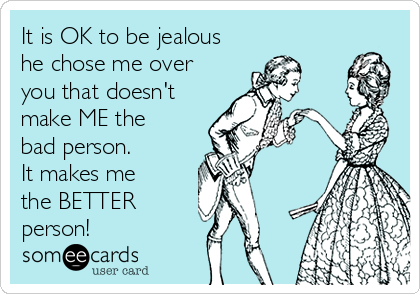 Look for places to experiment. If there is no place, organize self-training. The main thing is not to get carried away, because music determines the style. We bring something new to pair dances, rather than trying to change them.
Look for places to experiment. If there is no place, organize self-training. The main thing is not to get carried away, because music determines the style. We bring something new to pair dances, rather than trying to change them.
Search, improvise, don’t be afraid to go beyond, develop in different directions, be inspired by music atypical for the style
10. Try your hand at basic dance directions
dances exist according to their own non-choreographic laws.
This is the deepest delusion, which has turned into a ceiling for the qualitative development of partner dances. After all, all professional dancers, for example, in salsa or bachata, build their ideas on the basic choreographic principles.
Do not think that choreography is only applicable on stage. Any meaningful movement of the body can be choreographic. In general, try classical or modern choreography. Basically, hip-hop can work too.
11. Look for battle sensations
Pair dances return us to an active position of manifestation of our body. As in the days of our ancient ancestors, we impress the members of the opposite sex by how dexterous, hardy, sexy, etc. we are. Modern laws of the jungle in the entourage of large cities.
If you look around the dance floor, it becomes clear that the majority are clearly herbivores (not in the sense of vegetarians, but in relation to those around them). I am sure that predators are always more interesting in terms of the attractiveness of the image - try to find a counterbalance among herbivores, for example, a cat woman or a lion man.
The conversation is about an internal position, not about aggressiveness. Lability and lack of control are inherent in adolescents, and not in adult self-sufficient people.
Accordingly, even a training or friendly battle gives, on the one hand, practical skills - to make a bright sequence of movements, bring an idea to a climax, show a spectacular feature, on the other hand, develops the psychological basis of the dance - self-confidence, resistance to extraneous attention, self-control and self-control in complex elements.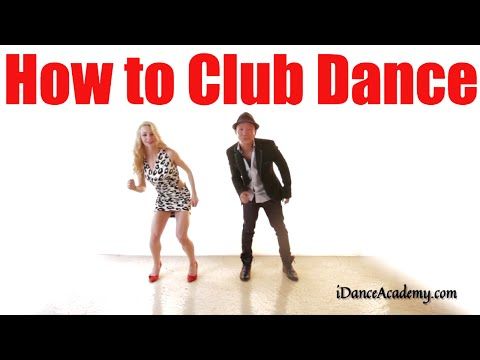
12. Communicate with professionals
The environment shapes the internal position. Basically, real passionaries of the dance community are ready to openly talk, discuss and support the development of dance in every possible way. Universal principles and the ideas they articulate have a much longer and more practical perspective than meets the eye.
Accept that, for example, behind the words "listen to your partner" is not only a beautiful metaphor, but also a practical skill to literally listen to your partner. At the same time, always treat every thought, even the most respected teacher, as a private opinion.
Your skill will lie in finding the scope of the idea even in conflicting opinions. Most often, the contradiction is speculative and the truth lies in the angle of perception or situationality.
Your dancing growth will stop sooner or later. This can happen at the level of three basic steps or years of experience in teaching and show performances. Regardless of your level, the suggested 12 life hacks can get you off the ground and greatly accelerate your dance growth. There is no way here without your motivation and activity. Take your dance development into your own hands. 9Ol000 Dangerous sexuality
Regardless of your level, the suggested 12 life hacks can get you off the ground and greatly accelerate your dance growth. There is no way here without your motivation and activity. Take your dance development into your own hands. 9Ol000 Dangerous sexuality
Salsa: destroyers of stereotypes
Couple dancing as a source of strength.
Self-destruction of the couple dance community
The Salsa series as a mirror of the community
Mamita Fridays: salsa, bachata
Destroying the myths about leading pair dances
Does dancing make us better?
The seven deadly sins of teachers
Why we will never dance bachata like the Dominicans
Why tango?
Dispute over musicality
Selection of dances according to alcohol preferences
Where to find inspiration for dancing?
Terrible tango nuevo
Distribution of roles in a salsa party
Argentinean tango through the eyes of a salsa dancer
Is there a predisposition to dancing?
Which is more effective: individual or group lessons?
Sexual overtones in couple dances
Cool dance moves.
 Learning dance moves with preschoolers
Learning dance moves with preschoolers Let's all start dancing together in a modern way at home? It is unlikely that there is an opportunity to resist such a temptation. There is not a single person in the world who would not reveal himself during dancing! And modern newfangled dances offer so many different unique approaches and movements! Before, everyone went around and around and called it dancing. And now, basically, they broke into the world, demolishing everything in their path, incendiary novelties.
At first it seems to anyone that he will never be able to move like that. But a little time passes, and he is already dancing faster than everyone else! And how many were uncertain words at the very beginning. In any case, every Internet user has a unique opportunity, literally, right now, to throw themselves into a dance “on the fly”, repeating the movements shown in the video.
Enormous burst of energy! And many will feel something that they have never felt before in their lives. Such they are - modern dances, for which no instructors are really needed. Moreover, in many the talent to move beautifully lives from birth. So to speak, it is embedded in them by Mother Nature herself, with whom, oh, how dangerous it is to argue! It is better not to start these senseless disputes. And start dancing right now.
Such they are - modern dances, for which no instructors are really needed. Moreover, in many the talent to move beautifully lives from birth. So to speak, it is embedded in them by Mother Nature herself, with whom, oh, how dangerous it is to argue! It is better not to start these senseless disputes. And start dancing right now.
Video: Strip-Dance Video tutorial for beginners!
Video: Go-go dance! Strip of plastic. How to learn to dance at home?
Modern dance lessons on video: Pretty girls learn how to dance beautifully!
A selection of video lessons of modern dance at home for beginners:
Below is a selection of step by step video tutorials for beginners at home that will surely teach you something useful and helpful. The squares with the video are small, click "full screen" or double-click on the video for a better view.
Dancing is a great way to cheer up, cheer yourself up and burn extra calories. Do not underestimate the benefits of such a simple cardio load. Even light dance movements help strengthen the heart muscle and help burn about 300 calories per hour.
Even light dance movements help strengthen the heart muscle and help burn about 300 calories per hour.
Light foot movements
The easiest movement for dancing is called the "square". Mentally draw in front of you a square with a rib width equal to the distance between your feet. On the count of times - step with your left foot into the upper left corner of an imaginary square, taking a step forward. On the count of two, step with your right foot into the upper right corner of the square (left, still standing in the left corner). While learning the movement, it is better to keep your hands on your belt, and with your body to lean forward a little towards the leg that is walking. Next, put the left foot back in the lower left corner of the imaginary square, and the right foot in the right. All - the movement is over. You will get the “box step” step that you have repeatedly seen in clips and various fitness programs.
"Square" can be done crosswise. Imagine the same imaginary square. Now the step will be a little more difficult, try to do it slowly so as not to get confused in the legs. We start with the right foot, bring it forward and put it in the upper left corner of the fictional square. Our feet will now stand crosswise, but we need to take out the left leg from behind the right leg and put it in the upper right corner of the fictitious square. You can lean forward a little, as it will not work to keep a clear line. Again turned out to be a cross - crosswise. From this position, we step with the right foot back, placing it in the lower right corner of the square, and with the left foot back in the lower left corner. Everything is correct, we walked forward crosswise, and back exactly.
Now the step will be a little more difficult, try to do it slowly so as not to get confused in the legs. We start with the right foot, bring it forward and put it in the upper left corner of the fictional square. Our feet will now stand crosswise, but we need to take out the left leg from behind the right leg and put it in the upper right corner of the fictitious square. You can lean forward a little, as it will not work to keep a clear line. Again turned out to be a cross - crosswise. From this position, we step with the right foot back, placing it in the lower right corner of the square, and with the left foot back in the lower left corner. Everything is correct, we walked forward crosswise, and back exactly.
Another simple foot movement is the “slide”. We put one leg to the side and bend it a little, and “pull” the second one as if on a slippery floor, gradually straightening the supporting leg, now to the other side: we put the leg, transferred the weight of the body to it, and by inertia the second leg stretches for the body.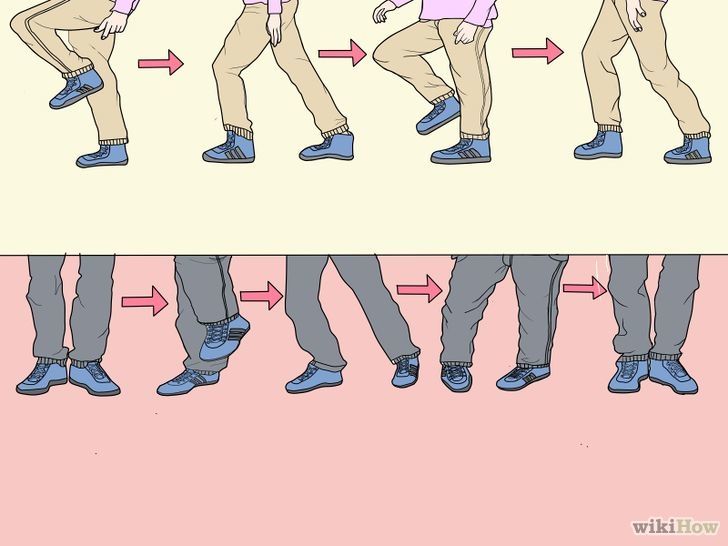 Do not forget to attach the leg that we pull to the supporting leg. At this point, you can clap your hands and you get a ready-made movement for dancing. Such slides are often used in hip-hop.
Do not forget to attach the leg that we pull to the supporting leg. At this point, you can clap your hands and you get a ready-made movement for dancing. Such slides are often used in hip-hop.
Light hand movements
The easiest arm movement for dancing starts from the shoulders. We put our hands on the belt, first we pull the left shoulder to the ear, therefore the right, the left then the right. We do it in turn. Now lower your arms and straighten them. We raise the left shoulder, flood the right and again the left and right, quickly. Let's add small swaying of the body from side to side (each time to the shoulder that rises), we have a movement with our hands.
If you are not good at standard movements, imagine that there is glass in front of you and a rag in your hands. Now you need to wash the glass, and you begin to make characteristic movements with a rag, as when washing a window. Change hands: now left, then right, try to “wash the glass” with both hands at once, then higher, then lower.
The whole dance can consist of such associative movements. For example, imagine you are sending a bowling ball down the lane. With a simple movement of the hips to the sides and in parallel, you release a fictional bowling ball, first with one hand, then with the other.
Figure-of-eight
The figure-eight can also be attributed to easy dance movements. The principle of movement is very simple. You need to move along the trajectory of the sign of infinity. Separately, you can perform the "eight" with the hips, separately with the knees, separately with the shoulders, or at once with the whole body. Try to perform this technique, with different amplitudes, in order to understand which particular "eight" looks best in your performance.
Is it difficult to learn to dance?
It's really no more difficult than anything else you're new to. Dance directions are very different from each other. Even if you have mastered one of them, it will be unusual for you to do the other.
However, all dances are connected with the ability to control one's body. And if this is not new to you (for example, you were engaged in martial arts, gymnastics, swimming, and even more so dancing), it will be easier for you to adapt to new movements than a beginner who is not friendly with his body.
Even if you have a fairly wooden body, don't despair. The secret of success is constant practice.
Learning to dance from video lessons is more difficult than from courses. If your body is flexible and obedient, you can still do something similar to the movements of the instructor from the video. If not, you can quickly become disillusioned with dancing: the difference between what is shown in the video and what you will see in the mirror will be too strong.
Still worth a try. At least in order to decide on the right one.
How many times a week do you dance?
Muscles may initially ache after exercise. But, unlike strength training or running, the body does not require a recovery period.
Therefore, you can safely practice dancing all the time. One of my teachers said that you have to dance 25 hours a day. In any case, the more you dance, the more noticeable the progress.
How to learn to dance modern dances
From this direction we have chosen three types that can often be found in the schedules of fitness clubs and dance schools. And the first - plastic and insanely beautiful contemporary.
Abel M/Flickr.com
Contemporary combines elements of modern jazz, yoga and martial arts, seasoned with improvisation and attention to breathing. This is freedom and plasticity - the natural beauty of movement.
Here is a clip with a contemporary combination. Give it a try, just be sure to warm up and stretch well before you teach.
And here is the second part:
By the way, about the warm-up. In the video below - a full lesson with a warm-up, stretching and analysis of the combination. In English, but everything is clear and without translation.
In English, but everything is clear and without translation.
If you do not have time to repeat or consider how some movement is done, set the speed to 0.25.
If you like combinations but can't repeat them yet, here are some more videos of routine contemporary lessons.
You will most likely have to do the same at the dance school before you can perform beautiful combinations.
imperiamarket.by
Many people confuse pole exercises and strip plastics. The second is just a sensual dance that can be performed without a pole.
When doing strip plastic, you will not stand at the barre and pull your toe. Everything here is based on the natural sexuality of the female body. Of course, many teachers diversify strip plastic with elements of contemporary or modern, Latin American dances and other areas, but it all depends on the teacher.
How beautiful your dance will look again depends on how well you know how to control your body, how mobile your joints and muscles and tendons are.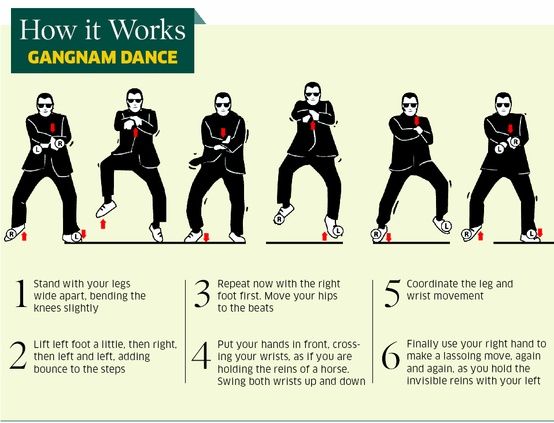
In the video below there is an analysis of the combination. Not too simple, but very sensual and beautiful. And you don't have to move on the floor, so your knees don't get hurt.
And here is a playlist with strip plastic lessons from different dance schools. There are both individual movements and combinations.
And one more, simpler combination. Try it if the first one doesn't work.
júbilo haku/Flickr.com
This is a sensual and beautiful dance, which, among other things, helps to develop plasticity and even get rid of some health problems.
There are a lot of belly dance lessons on YouTube. Below are some of them.
Basic movements are explained here very clearly:
And the second part:
Below is a playlist with five lessons for beginners from another teacher.
How to learn to dance street dancing
pinterest.com
Hip-hop has only existed for about 50 years. But during this time, many trends and styles have appeared, with different elements, plasticity, and special features.
But during this time, many trends and styles have appeared, with different elements, plasticity, and special features.
In addition, modern hip-hop is often complemented by movements from other dance styles, which provides even richer vocabulary and original combinations.
But before you come up with your own combinations, you need to master the basics. In the playlist below you will find basic moves, steps and many combinations. They explain everything in an accessible way. If you can't make it, slow down the video speed.
The videos in the next big playlist explain the concepts of inertia, manipulation and isolation in hip-hop. There's also a story about improvisation, battle behavior if you're up for it, and a few variations of ground hip-hop moves (on the floor) to diversify your combinations.
Colonne/Flickr.com
Breakdance consists of different elements: tricks and power movements on the floor, waves, fixations, as well as changing the levels at which the dance is performed.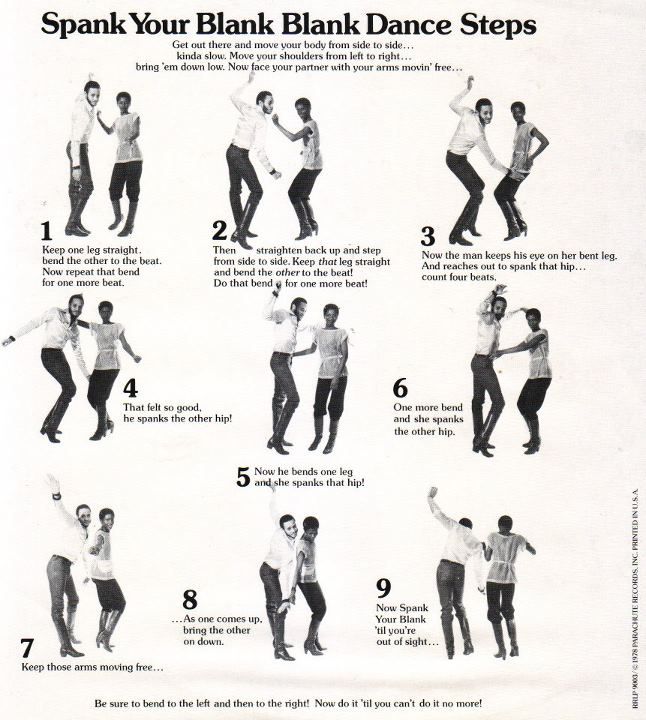
Here on this channel there is training in different styles: Waving, King Tut, Robot, - an analysis of the technique of power elements and basic movements at different levels.
Below is a video detailing the 6 steps element from Footwork.
And here you can see how the "turtle" is performed.
Here is a voluminous playlist, in which there are quite a lot of breakdance elements with a detailed analysis of the technique of dance and strength elements.
Lauren Wood/Flickr.com
Sexy dance in which you need to actively work the buttocks, hips, stomach and arms. In this playlist you will find several lessons with analysis of twerk movements.
How to learn to dance ballroom dancing
vimbly.com
At least once in your life, you will surely need a waltz. Moreover, it is not so difficult to dance it at an amateur level.
Here are four good lessons that will teach you how to hold your hands and do the basic waltz steps in pairs or individually.
How to learn to dance social dances
Social dances are not designed for competition, but for communication between partners and enjoyment. Improvisation is welcome here, through which the dancer can express himself, his feelings and emotions.
This dance comes from the Dominican Republic. He is very sensual and sometimes erotic. The basis of bachata is four steps with an emphasis on the last one. In the dance, there are rotations and throws of the partner, small lifts.
Even though bachata is a pair dance, solo combinations can also be taught. For example, if you don't have a partner yet.
In the video below - an overview of the main steps. Where to transfer body weight, how to hold hands, how to focus - everything is described in detail.
And here is a variation of bachata from the same teacher.
Below is a playlist for those who want to dance bachata together. These are Dominican bachata lessons from the Imagine dance school.
youtube.com
This is a passionate pair dance from Africa, more precisely from Angola. Now it is performed all over the world and is especially popular in France and Portugal.
Steps, lots of hip work and close contact with partner. Sometimes very tight. For example, in the style of tarraxinha, a slower and more sensual version of this social dance.
Here is a playlist of kizomba lessons.
And another playlist with videos from another dance studio.
That's it. If you have favorite tutorial videos, share them in the comments to the article.
It's not a secret for anyone that when you get up in the morning, you will spend the whole day with such an attitude. There are many ways to wake up in a good mood, and one of them is dancing. Having picked up certain movements for the dance, is quite possible to replace charging or running. Not only are dance movements useful, they also have a positive effect on a person’s mood.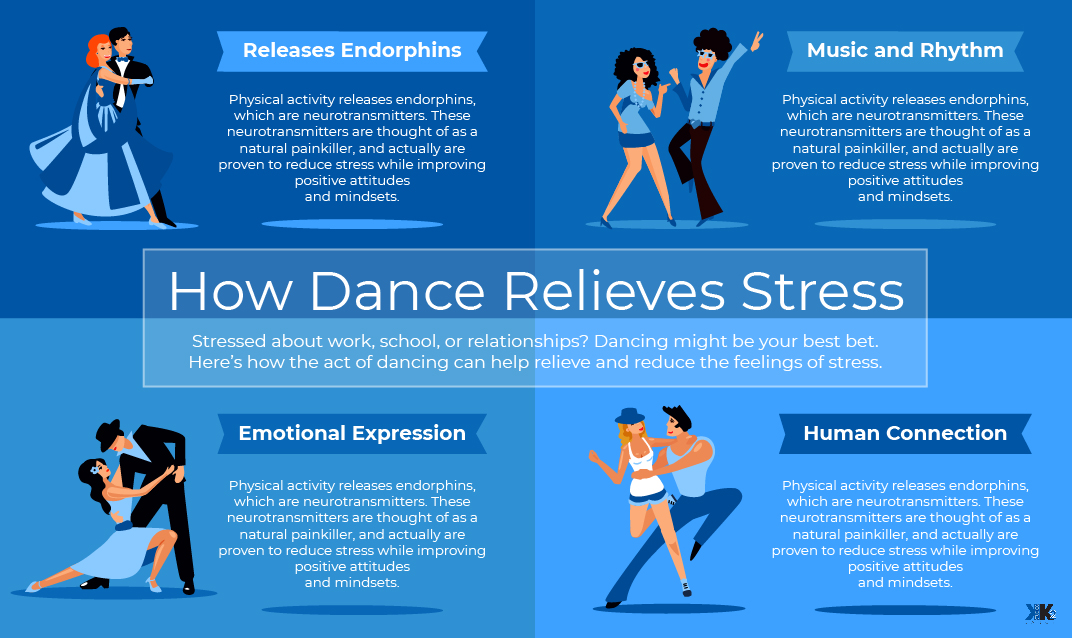
There are even many cases when people started their day with simple dance moves, and then got into the popular one.
Basic dance moves for physical health
Adding physical activity to your life, it should be noted that harmony is acquired, self-esteem and mood increase. In addition, this is a good activity for people at risk of cardiovascular disease. However, do not forget about the load. Perhaps at first you need to do easy dance moves , but even then you can feel positive results in the form of a surge of energy. This is even reported by scientific studies.
Italian scientists observed a group of people who danced every week. As a result, not only did their physical condition improve, but they also became more energetic.
At first, when learning the movements for beginners, do not overdo it too much. Only by gradually increasing the load, the body acquires flexibility, endurance and strength. Most classes begin with flexibility and stretching exercises.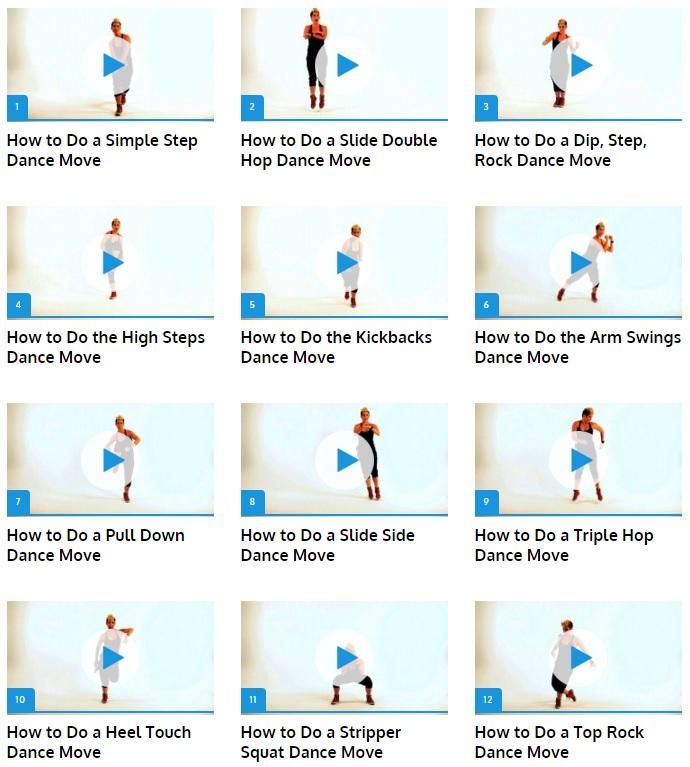 Performing the movements themselves for the dance, all muscle groups will be involved. Styles such as ballet or jazz, and not only, include jumping, which develops strength and endurance.
Performing the movements themselves for the dance, all muscle groups will be involved. Styles such as ballet or jazz, and not only, include jumping, which develops strength and endurance.
Dancing: Movements for Beginners
It's no secret that even the most simple dance moves is not only beneficial for the body, but also healing for the psyche. These include:
- "Square" ” is performed with feet in an imaginary square. At the same time, the hands are on the belt, and the body protrudes slightly forward. This dance movement is also called "Box Step". It is often used in music videos and in fitness.
The next movement comes from the previous one. Only it is performed criss-cross. At the same time, the step becomes more difficult: the right foot is brought forward and placed in the upper left corner, and the left foot is placed behind the right foot in the upper right corner of the fictitious square. From this position step back.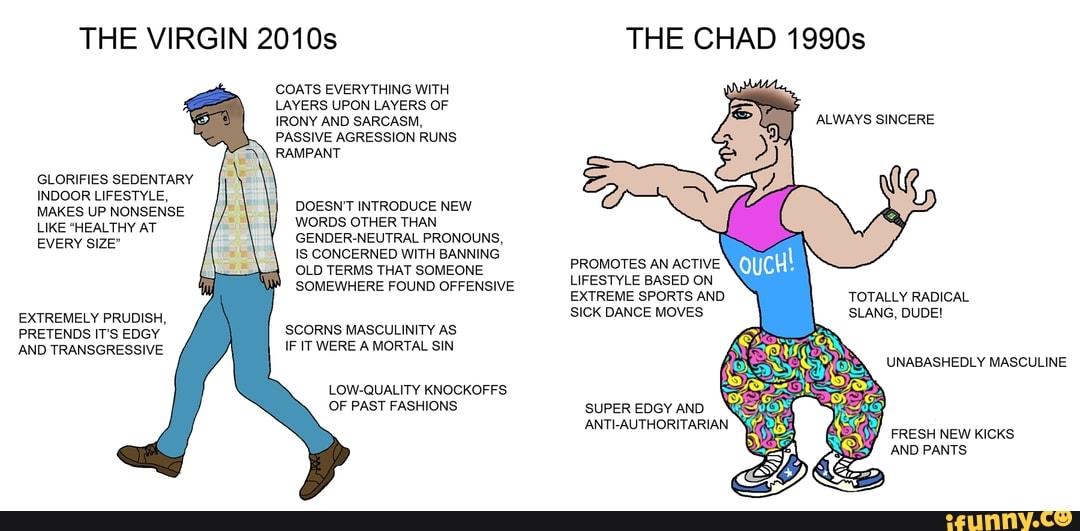
- "Slide "- This is another simple movement in which one leg stands to the side and is slightly bent, and the other is "pulled" behind as if on a slippery surface, straightening the supporting leg. The same is repeated on the other side. Such slides can be found in "Hip-hop"
- "Eight » You can perform with hips, knees and even shoulders, moving along the trajectory of infinity (8-ki).
Even in the simplest movements in the dance, a person will feel himself and establish contact with himself. Through such activities, people get rid of repressed emotions. Doing different dance moves , there is an exit of feelings. This is typical for most areas, but you can especially remember. Even the term itself refers to the spontaneous manifestation of moods, feelings, emotions that are secondary to the audience.
In Rus', the ancestors used ritual rhythmic dances to express overwhelming feelings, emotions, hopes and expectations. Everyone took part in them, including children and the elderly.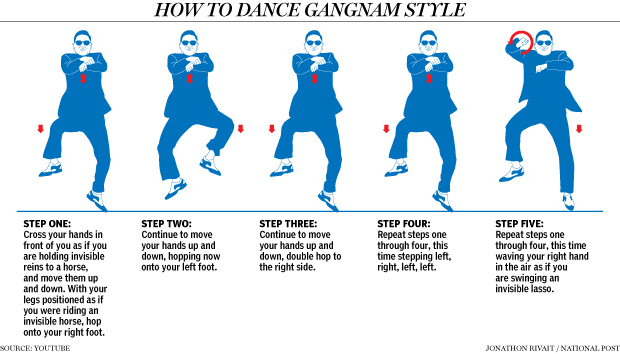 Children's dance moves was no different. They tried to teach Russian dance from a very young age. Over time, dance culture has improved, but people can still get rid of sadness through dance.
Children's dance moves was no different. They tried to teach Russian dance from a very young age. Over time, dance culture has improved, but people can still get rid of sadness through dance.
New and unusual dance moves, which are not used in everyday life, help to destroy the usual scenarios of life, get out of the vicious circle and let in the long-awaited changes. In the end, dance moves , give joy, make a person happy. This is also confirmed by scientists. It turned out that dance movement therapy regulates the level of dopamine and serotonin in the body.
Unfortunately, more and more people are now suffering from depression. And dance, from ancient times, was considered a healing art. Shamans used it as a way to enter a trance and expand their consciousness. They believed that dance movements are a connection between Heaven and Earth. So, they can be used as well as meditation. It will help you find yourself and activate your dormant abilities.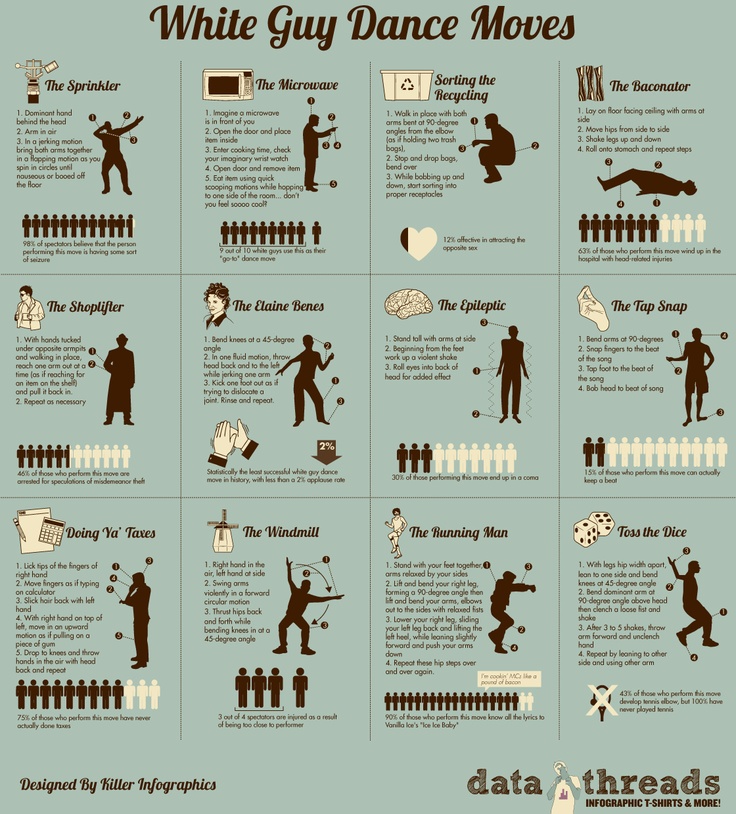 The state of harmony, inner integrity and freedom will successfully become a pleasant result of daily activities!
The state of harmony, inner integrity and freedom will successfully become a pleasant result of daily activities!
Instruction
Decide on the type of dance. Each direction has its own characteristic movements, whether it be flamenco, breakdance, rock and roll or samba. For example, for Latin American dances, sexy and playful, the defining elements are the swinging of the hips, rotation, smooth movement in space. Movements and steps are performed at a high pace to fast music. Breakdancing is based on acrobatic elements, turns around your body, rotations on your arms and head. The dancer must have physical endurance, good coordination. Flamenco can be recognized by the characteristic for the performer beating the rhythm with heels, by the smooth free movements of the hands, like a fan opening and closing.
Learn the basic elements of the chosen dance direction and performance technique. All compositions include the basic elements of this style, poses, steps, gestures.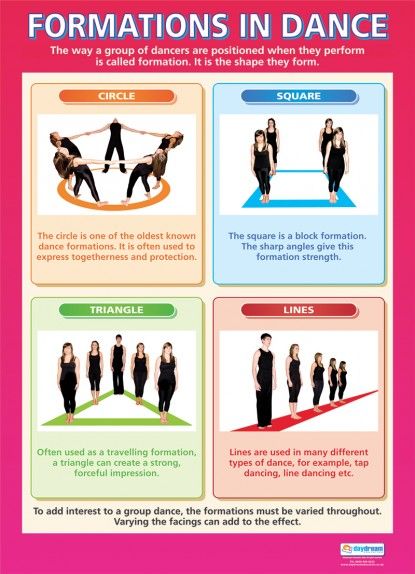 To do this, you can watch dance videos, training programs. Your first task is to learn the basics of dance. It will be a solid foundation for further steps.
To do this, you can watch dance videos, training programs. Your first task is to learn the basics of dance. It will be a solid foundation for further steps.
Pick up some music. Each dance has its own characteristic sound, melody, rhythm. For example, salsa's time signature is four quarters. The dance is performed at a fast pace with a complex rhythmic pattern. In some countries this style is known as "music of the tropics". You can easily find the songs you need by the name of the dance.
While listening to the melody, try to perform the basic elements of the dance. If the rhythm does not fit the selected movement, do the combination slower or, conversely, faster. Change basic elements. At first, the dance will look like a set of basic movements that follow each other.
After learning the basic elements and literacy of the dance, listen to the music and try to improvise. At this stage, you can just add your own movements, show creativity. In order to make it easier to improvise, come up with a plot.